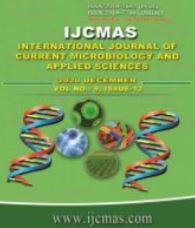


 National Academy of Agricultural Sciences (NAAS)
National Academy of Agricultural Sciences (NAAS)

|
PRINT ISSN : 2319-7692
Online ISSN : 2319-7706 Issues : 12 per year Publisher : Excellent Publishers Email : editorijcmas@gmail.com / submit@ijcmas.com Editor-in-chief: Dr.M.Prakash Index Copernicus ICV 2018: 95.39 NAAS RATING 2020: 5.38 |
In India vultures are ecologically, socially and culturally significant as scavenger. Nine species of vultures are recorded in the Indian subcontinent; seven out of them can be seen in Rajasthan including resident and migratory species. Present study was carried out at eight different study sites in Hadoti Region of south eastern Rajasthan. Total three species of vulture, with total population of 164 individuals were observed during study period using head count method. Among these Long- billed Vulture were highest (n = 83) followed by White-rumped Vulture (n = 69) while Egyptian Vulture was minimum population (n = 12). The present study has revealed that the habitat loss, dependency on city carcass, electrocution by the power lines passing through different habitats, human behaviour were the main threats to the species in this area. Out of 40 respondents, 57.5% had a positive attitude, 22.5% had a negative attitude and 20% had a neutral attitude towards vulture.
 |
 |
 |
 |
 |